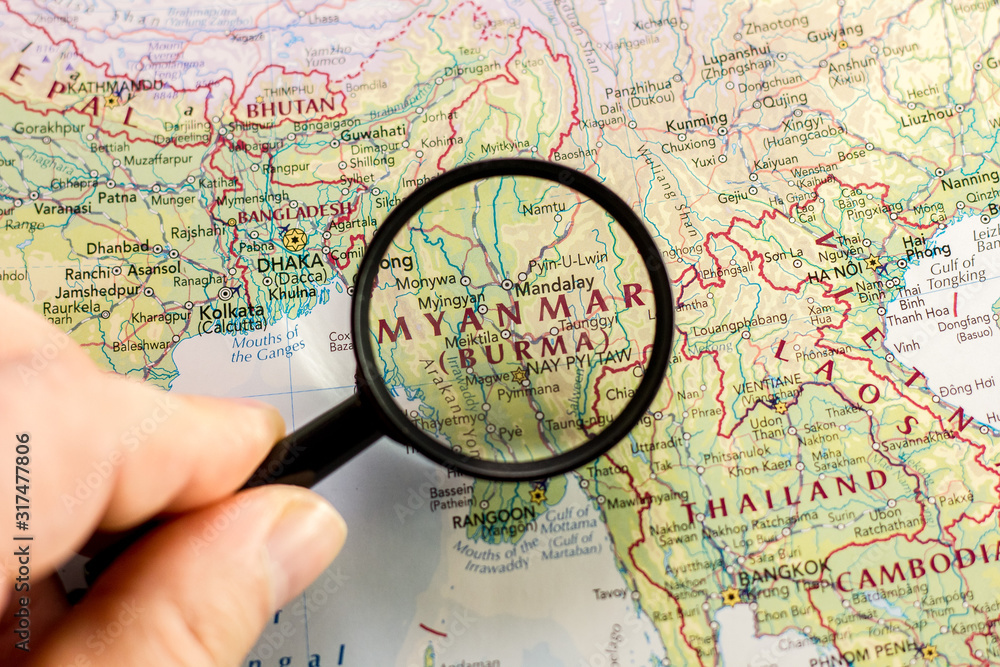As Myanmar grapples with its complex political landscape, the nation has emerged as a focal point in the escalating geopolitical rivalry between China and India. With China increasing its influence through substantial investments, concerns are mounting in India about the implications for regional stability and security.
Myanmar’s historical ties to China date back centuries, characterized by trade and strategic alliances. Sharing a long border, China views Myanmar as a buffer against Western influence and a critical gateway to the Indian Ocean.
Myanmar is home to a multitude of ethnic groups, many of which have formed armed organizations in response to historical marginalization and ongoing conflicts with the central government. These ethnic armies, such as the Kachin Independence Army (KIA) and the Arakan Army (AA), have evolved over decades, driven by a mix of local aspirations for autonomy, economic control, and resistance against state oppression. While these groups have established ties with China—largely due to geographic proximity and mutual interests—this relationship does not equate to outright control.
China’s economic engagement with Myanmar has intensified in recent years, especially through the China-Myanmar Economic Corridor (CMEC), part of the ambitious Belt and Road Initiative (BRI). The Operation 1027 illustrates this trend, with Chinese companies ramping up investments in Myanmar’s energy sector despite the ongoing political turmoil. This strategy allows China to solidify its influence while many Western nations impose sanctions on the junta.
While these investments promise short-term economic benefits for Myanmar’s military leaders, they also risk entrenching Chinese control over crucial sectors, raising alarms in New Delhi. Indian officials are concerned that Myanmar could become a vassal state, further diminishing India’s regional influence.
The political upheaval in Myanmar, particularly following the military coup in February 2021, has created an environment where China can assert its influence more boldly. Rather than pushing for democratic reforms, Beijing has opted for a pragmatic alliance with the junta, prioritizing stability over ideals. This stance stands in stark contrast to India’s support for democracy in the region.
India sees the junta’s increasing ties to China as a direct threat. A militarized Myanmar aligned with Beijing could destabilize India’s northeastern borders, potentially emboldening insurgent groups and escalating cross-border tensions. The prospect of a China-aligned Myanmar raises serious strategic concerns for New Delhi.
Regional Implications and the Indian Dilemma
China’s growing presence in Myanmar creates a precarious scenario for India. As Myanmar becomes more dependent on Chinese investments, India faces a pressing challenge: how to assert its own influence without exacerbating tensions with Beijing. With China seeking to establish dominance in the Indian Ocean, Indian officials fear encirclement, which could compromise their strategic position.
Additionally, the ongoing conflict in Myanmar has led to an influx of refugees into northeastern India, further complicating India’s security challenges. If Myanmar tilts too far into China’s orbit, India risks losing not just a neighbor but a crucial ally in its broader regional ambitions.
As Myanmar continues to navigate its political and economic identity, the influence of China will remain a significant factor. The military junta may believe it can balance relationships, but history shows that close alignment with China often comes with considerable costs.
For India, the imperative will be to recalibrate its approach to Myanmar, promoting its strategic interests while ensuring regional stability. The choices Myanmar makes in the coming months will have profound implications not only for its own future but also for the delicate balance of power in Southeast Asia.
In this evolving landscape, Myanmar stands at a crossroads, caught between two giants. As the stakes escalate, the geopolitical contest for influence in Myanmar may define the region’s future trajectory.


